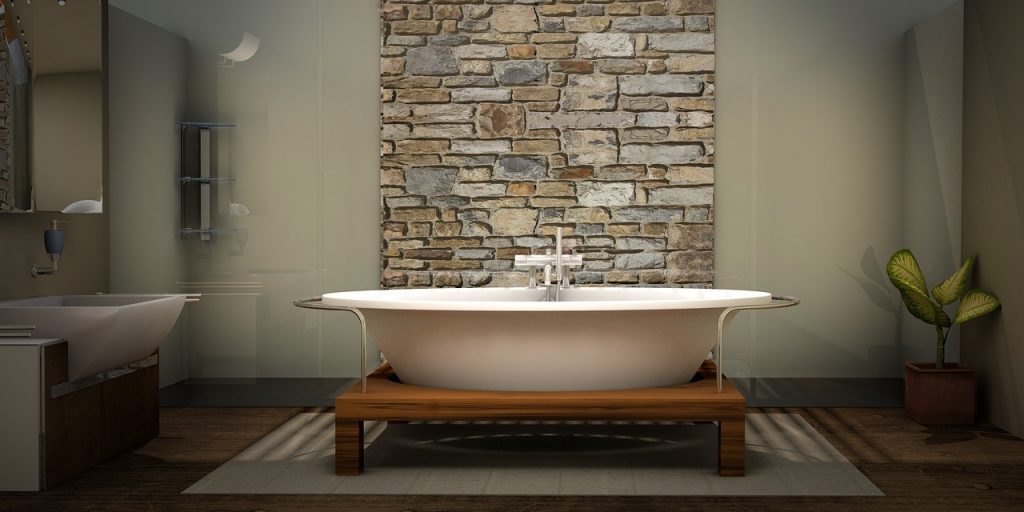Knowing the different types of manufactured stone veneers
Manufactured stone veneers are rapidly gaining popularity as they continually improve over the years to become almost indistinguishable from natural stone. Manufactured stone is a wonderful option for exterior and interior accents, or a complete siding.

An accent stone wall in the bathroom
Manufactured stone veneers are rapidly gaining popularity as they continually improve over the years to become almost indistinguishable from natural stone. Manufactured stone is a wonderful option for exterior and interior accents, or a complete siding. There are some good reasons – it is cost-saving, as it is cheaper than natural stone, is more predictable, when it comes to color and texture, it is generally lighter than natural stone, and it it easier to cut and install.
Manufactured stone veneer is fabricated from lightweight concrete mix (Portland cement, aggregates, and iron oxides), poured into a mould. To resemble real stone, some manufacturers create moulds from real stones to recreate their texture.
An important notice is, that it is what it is – a veneer – a relatively thin layer that serves as an outer surface applied to another structure (a brick wall, for example). Manufactured veneer stone is too weak to be used structurally for building purposes.
One of the good reasons for using faux stone, is the great variety of colours, textures, sizes, etc. But this could also be a bit confusing, too. If you have already decided to use manufactured stone, you would have to decide what exactly do you want – and you could start with the shape. Do you want a wall of stones, dry stacked wall, river rocks, or something else?
There are several common types of manufactured stone veneer, based on the shape of the moulds.
River rock and Pebble stone – these are shaped in rounded oblong moulds, resembling the stones, found in rivers and shaped by the flowing water. They give depth, and are particularly suitable for pond walls or rough borders, for example. They usually have colorful rocks and are really in place around riverbanks, where such stones are naturally found.
Ledgestones are almost evenly cut symmetrical, and tight-fitting stones, usually stacked together using a mortar, cement, and sand mixture. They come solely in neutral colors. In the past, natural ledgestone has been solely used near cliff edges and ledges where the stones were sourced.
Fieldstone has the appearance of randomly found stones with irregular shapes and heights, giving a rustic and nostalgic feeling. This type of stone has been popular in agricultural areas, where the stone have been found when cultivating the soil. The come in multiple color options.
There are also numerous form and color variations of those general manufactured stone veneers.
So, when choosing the shape of manufactured stone, think about how it will match with your area and surroundings.
The article is written after na interview with a canadian company.
